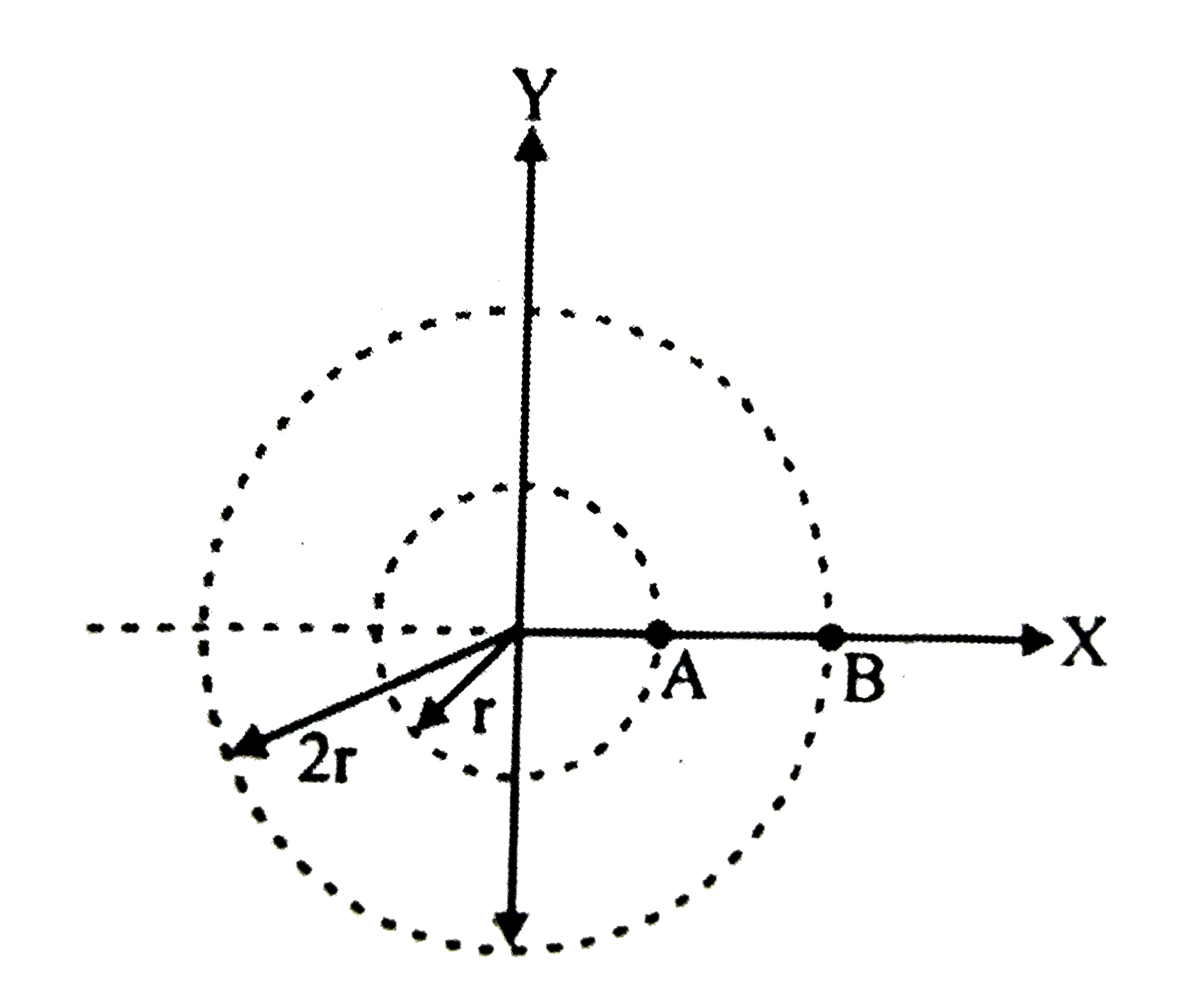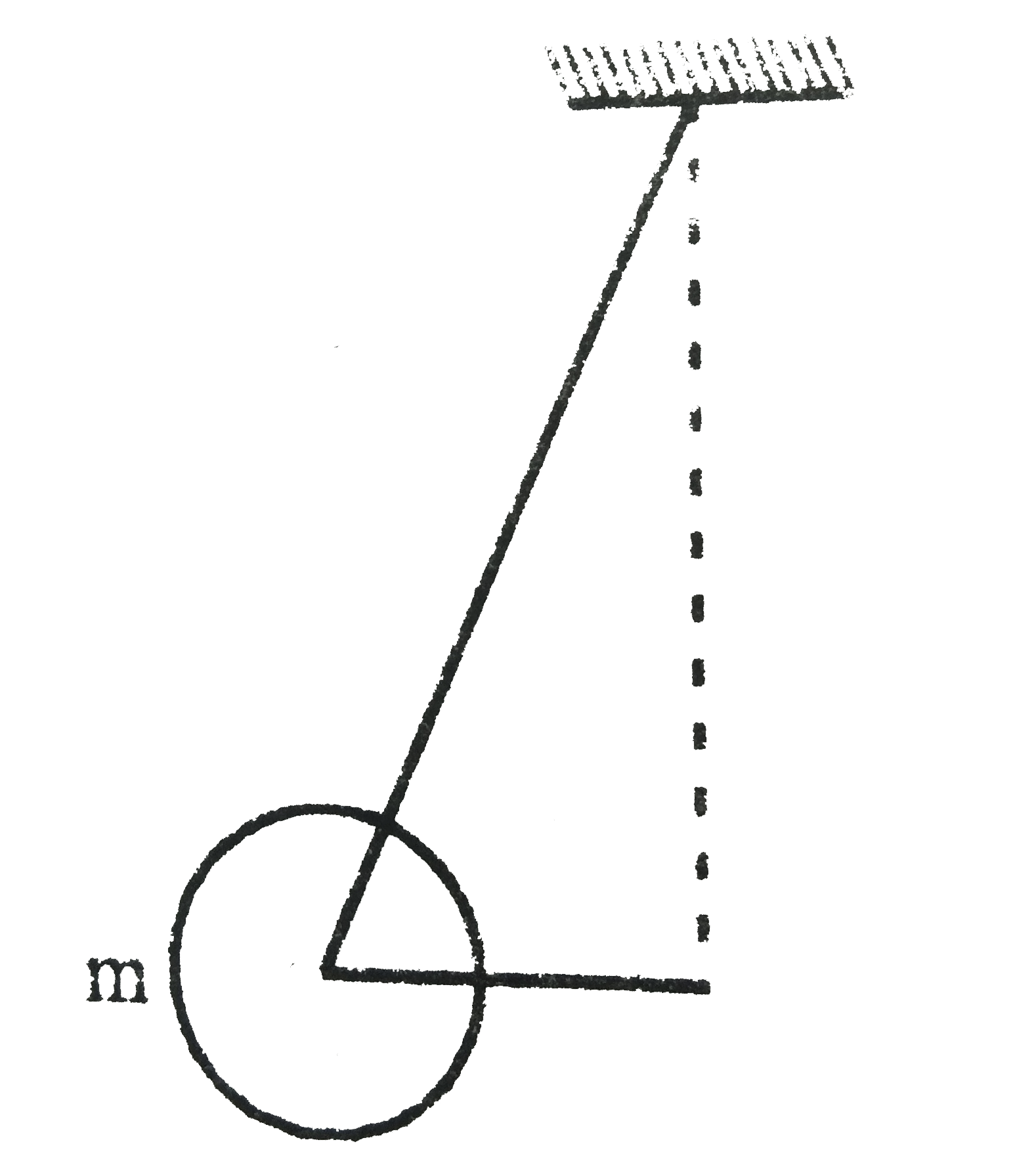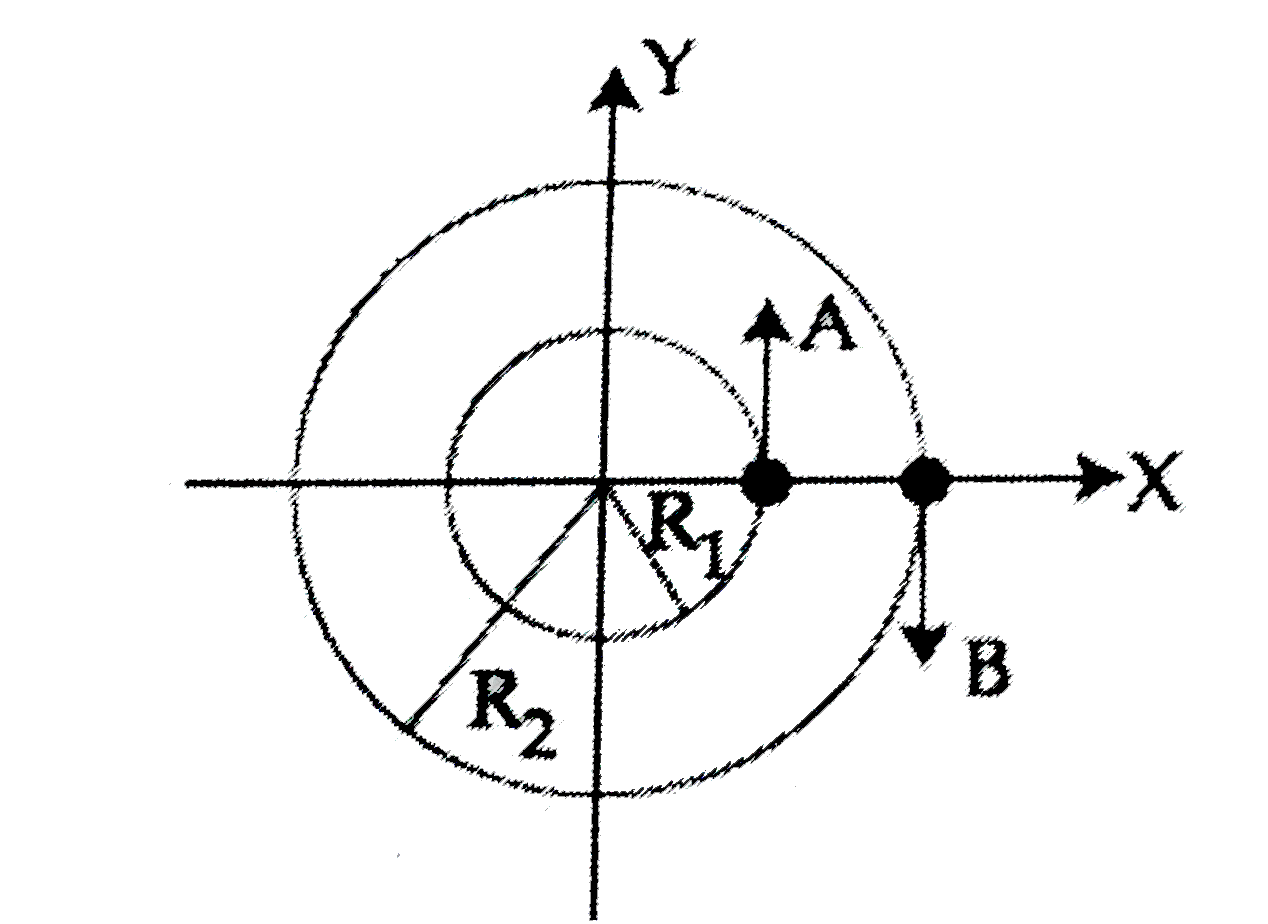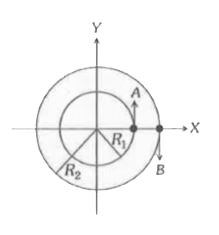Two particles A and B are moving in a horizontal plane anitclockwise on two different concentric circles with different constant angular velocities and respectively. Find the relative velocity (in m/s) of B w.r.t. A after tome . They both start at the position as shown in figure
 Solution in Gujrati
Solution in Gujrati
The correct Answer is:
Step by step video & image solution for Two particles A and B are moving in a horizontal plane anitclockwise on two different concentric circles with different constant angular velocities 2omega and omega respectively. Find the relative velocity (in m/s) of B w.r.t. A after tome t=pi//omega. They both start at the position as shown in figure ("Take" omega=3rad//sec, r=2m) by Physics experts to help you in doubts & scoring excellent marks in Class 12 exams.
Updated on:21/07/2023Topper's Solved these Questions
- CIRCULAR MOTIONBOOK - ALLEN CHAPTER - CIRCULAR MOTIONEXERCISE - Dynamics of circular motion
8 Videos
- CIRCULAR MOTIONBOOK - ALLEN CHAPTER - CIRCULAR MOTIONEXERCISE - EXERCISE(S-2)
6 Videos
- CIRCULAR MOTIONBOOK - ALLEN CHAPTER - CIRCULAR MOTIONEXERCISE - EXERCISE (J-A)
6 Videos
- BASIC MATHSBOOK - ALLEN CHAPTER - BASIC MATHSEXERCISE - Question
1 Videos
- CURRENT ELECTRICITYBOOK - ALLEN CHAPTER - CURRENT ELECTRICITYEXERCISE - EX.II
66 Videos
Similar Questions
The ball of mas m moves with speed v againest a smooth , fixed vertical circular groove of radius R kept on smooth horizontal surface find the
a. normal reaction of the floor or the ball.
b. normal reaction of the vertical wall on the ball.
View SolutionA stone is launched upward at 45∘ with speed v0. A bee follow the trajectory of the stone at a constant speed equal to the initial speed of the stone.
(a) Find the radius of curvature at the top point of the trajectory.
(b) What is the acceleration of the bee at the top point of the trajectory? For the stone, neglect the air resistance.
View SolutionA ball of mass (m)0.5kg is attached to the end of a string having length (L)0.5m. The ball is rotated on a horizontal circular path about vertical axis. The maximum tension that the string can bear is 324N. The maximum possible value of angular velocity of ball (radian/s) is -
 .
.
View SolutionFind dydx for the following :
(i) y=x7/2 (ii) y=x−3
(iii)y=x (iv) y=x5+x3+4x1/2+7
(v) y=5x4+6x3/2+9x (vi) y=ax2+bx+C
(Vii)y=3x^(5)-3x-1/x
View SolutionIn the Bohr's model of hy drogen atom, the electron moves around the nucleus in a circular orbit of radius 5×10−11m. Its time period is 1.5×10−16s. The current associated with the electron motion is:-
View SolutionIn the figure shown a T-shaped conductor moves with constant angular velocity ω in a plane perpendicular to uniform magnetic field B. The potential difference VA−VB is

View SolutionA particle is moving with constant speed in a circle as shown in (Fig. 5.163). Find the angular velocity of the particle A with respect to fixed point B and C if angular velocity with respect to O is omega . .
View SolutionParticles A and B move with constant and equal speeds in a circle as shown in (Fig. 5.164). Find the angular velocity of the particle A with respect to B , if the angular velocity of particle A w.r.t. O is omega . .
View SolutionThe angular velocity of a particle moving in a circle realative to the center of the circle is equal to ω. Find the angular velocity of the particle relative to a point on the circular path.
View SolutionTwo particles A,B are moving on two concentric circles of radii R1) and R2 with equal angular speed ω. Att=0,their positions and direction fo motion are shown in the figure :

View SolutionTwo particles A,B are moving on two concentric circles of radii R1) and R2 with equal angular speed ω. Att=0,their positions and direction fo motion are shown in the figure :

View SolutionA particle of mass m is whirled in horizontal circle with the help of two threads of length l each as shown in figure . Angular velocity equals omega , then
View SolutionA and B are moving in two circular orbits with angular velocity 2 omega and omega respectively. Their position are shown at t = 0. Find the time at which they will meet for 1st time
View Solutionदो कण, A एवं B, बराबर कोणीय वेग ω से R1 एवं R2 त्रिज्या के दो समकेन्द्रित वृत्तों पर चल रहे है। समय t=0 पर उनकी गति की दिशायें एवं स्थितियों को चित्र में दिखाया गया है t=π2ω पर सापेक्ष वेग (→vA−→vB) होगा

View SolutionTwo particles A,B are moving on two concentric circles of radii R_1 and R_2 with equal angular speed omega . At t=0 ,their positions and direction of motion are shown in the figure. The relative velocity vecV_a-vecV_b at t=pi//2omega is given by :
View SolutionIn the figure shown a T−shaped conductor moves with constant angular velocity ω in a plane perpendicular to uniform magnetic field B. The potential difference VA−VB is

View Solution
